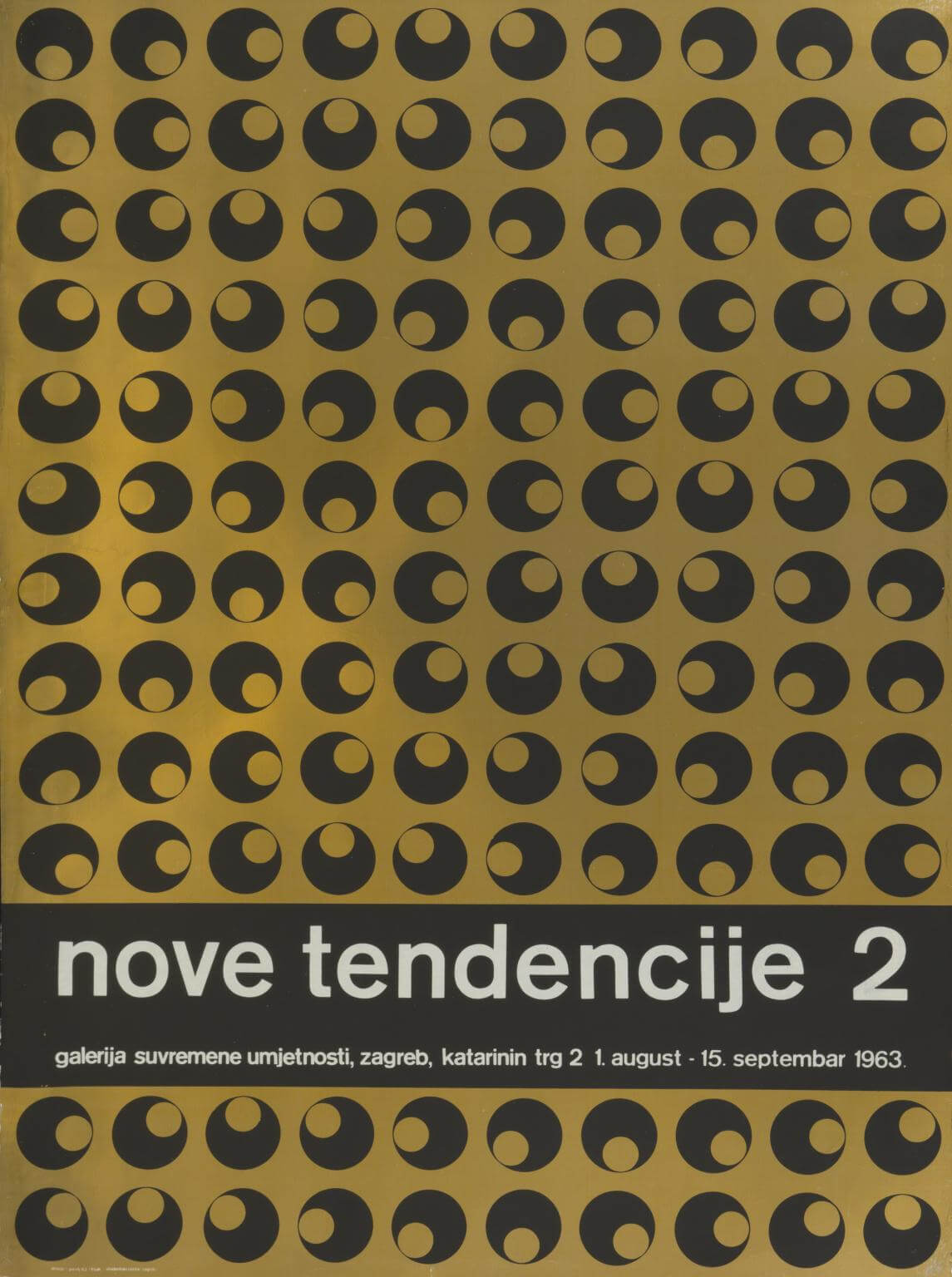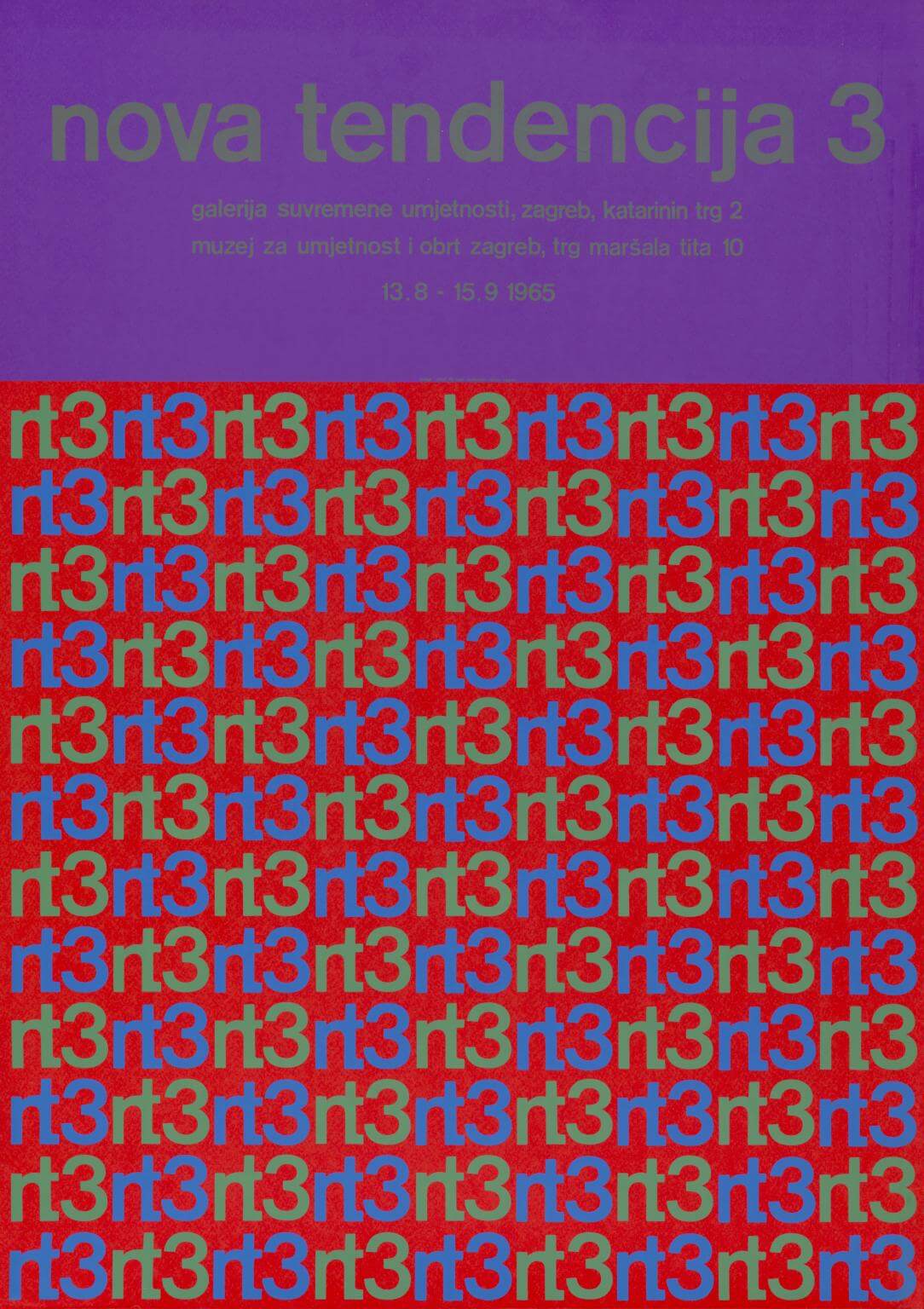February 23, 2022 - An art movement met with worldwide recognition that helped establish Zagreb as a cultural capital. A look at the Kinetic Art movement from Zagreb.
New Tendencies (Nove tendencije) is a series of posters curated by Croatian artist Ivan Picelj, which originally took place at Zagreb’s Museum of Contemporary Art (MSU), in what was then Yugoslavia, from 1961 to 1969. It was an international movement of European artists and theorists who sought after working with new art techniques that differed from abstract expressionism and complex, non-geometric art.
Ivan Picelj is known as one of the most characteristic artists to have come from Croatia and as one of the rare Balkan artists to fully adopt an avant-garde way of thinking and conceptualising art. Aside from leading the New Tendencies are movement, he designed numerous publications, journals, posters, and logos, including the exhibition posters for the MSU, in addition to their exhibition catalogues, and later, the institution’s basic typography and logo.
The art of the New Tendencies movement advocated experimenting with the visual investigation of surfaces, structures, and objects, creating the new concept of methodically planned art, using ideas from mathematics, scientific research and colour theory, and sometimes computers to create images. This method came to be known as “programmed art”, in which basic plastic units were multiplied within a grid, which became an instantly recognisable style of the art movement. Complex, abstract forms were rejected, as simple colour palettes were used and shapes were reduced to simple geometric elements. It was not only visually innovative, but relevant to what was happening in the art world at the time. As Europe was emerging from over a decade of post-war austerity and reconstruction, the artists of that era were reflecting a new age of economic growth and technological progress in their practices.

New Tendencies 2 poster by Ivan Picelj, 1963. © Ivan Picelj Estate

New Tendencies 3 poster by Ivan Picelj, 1965. © Ivan Picelj Estate
The artists of the New Tendencies movement saw the viewer not as a passive spectator but as an active participant, thus encouraging the artist to create work that triggers complex visual sensations, activated by the viewer’s perception of shape and colour. This resulted in some of the movement's most well-known pieces of “moving” kinetic art, created with the use of optical “op” effects - from the scientific understanding behind how these effects are perceived by the viewer.
A key idea behind New Tendencies was how they used the methodological production of their art to commercialise it. Making art that could easily be replicated, they hoped to stop artworks from becoming marketable luxury goods. Coming from the socialist values of its country, the movement emphasised the social role of the artist, and promoted the idea of collective work in an attempt to end the “bourgeois” idea of the artist working as a lone genius. The movement was a collective effort of artists from Austria, France, Germany, Italy and Switzerland, participating alongside Ivan Picelj and fellow Zagreb artist Julije Knifer in the first New Tendencies exhibition in 1961.
The exhibition was such a success that it led to further instalments of the movement, including Tendencies 2 and 3, the latter themed around the movement in Paris. However, Zagreb continued to be the movement’s prime location, functioning as “a kind of unofficial cultural capital of Yugoslavia”, according to Croatian artist, independent curator, and researcher Darko Fritz.
The popularity of New Tendencies triggered an international Op-Art-boom, which was endorsed by an exhibition at the New York MoMA in 1965, titled The Responsive Eye. Now, geometric abstract art is as popular as ever, and the innovative art movement from Zagreb has made its way into academic studies and art galleries all over the world - including an exhibition at London's Tate Modern, running until 26 June 2022.
For more, check out Made in Croatia.


